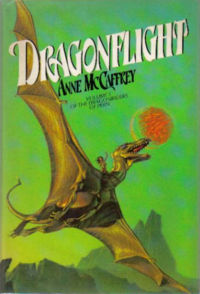2. Middles
My favourite structure for the middle of a novel is a rhythm of overlapping waves. Or perhaps I mean that this is my favourite way to think about structure for the middle of a novel.
Setting it out as a diagram, it looks like this:
overlappingwaves_clip_image001_0000.png)
Each wave represents the build-up and peaking of a particular sub-story or interest. Could be separate strands of narrative, could be different aspects of the protagonist’s life. The height of the wave represents—very vaguely—the degree of intensity and excitement.
And, yes, I admit, I have drawn diagrams like that when working out middles for my last few novels. I told you I was a planner!
I like overlapping waves because it means no troughs, no flat periods. By the time one sub-story or interest is coming to its (temporary) resolution, another is already starting to build.
Anne McCaffrey’s Dragonflight is a great illustration (first and best of the Pern books, for my money). When you break it down, there’s a series of quite separate sub-stories:

a) Lessa triumphs as Fax is overthrown
b) Lessa succeeds in bonding with dragon
c) Weyr defeats revolt and forces come together against Threadfall
d) Threads are winning until reinforcements from the past arrive and save the day
But, in reading, you don’t break it down, because the sub-stories are so seamlessly braided together. As one reaches its peak, the next is already hooking you in. |





